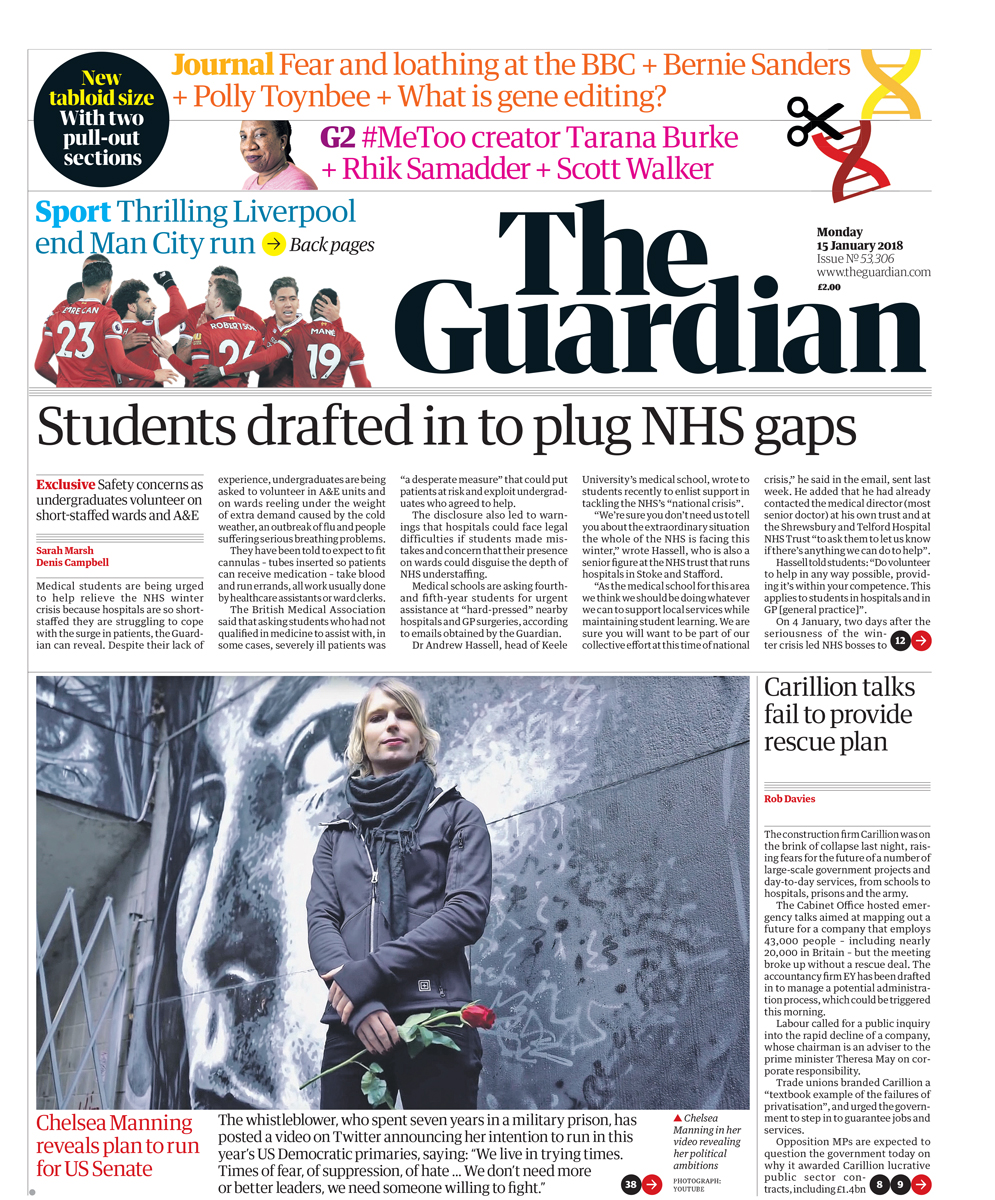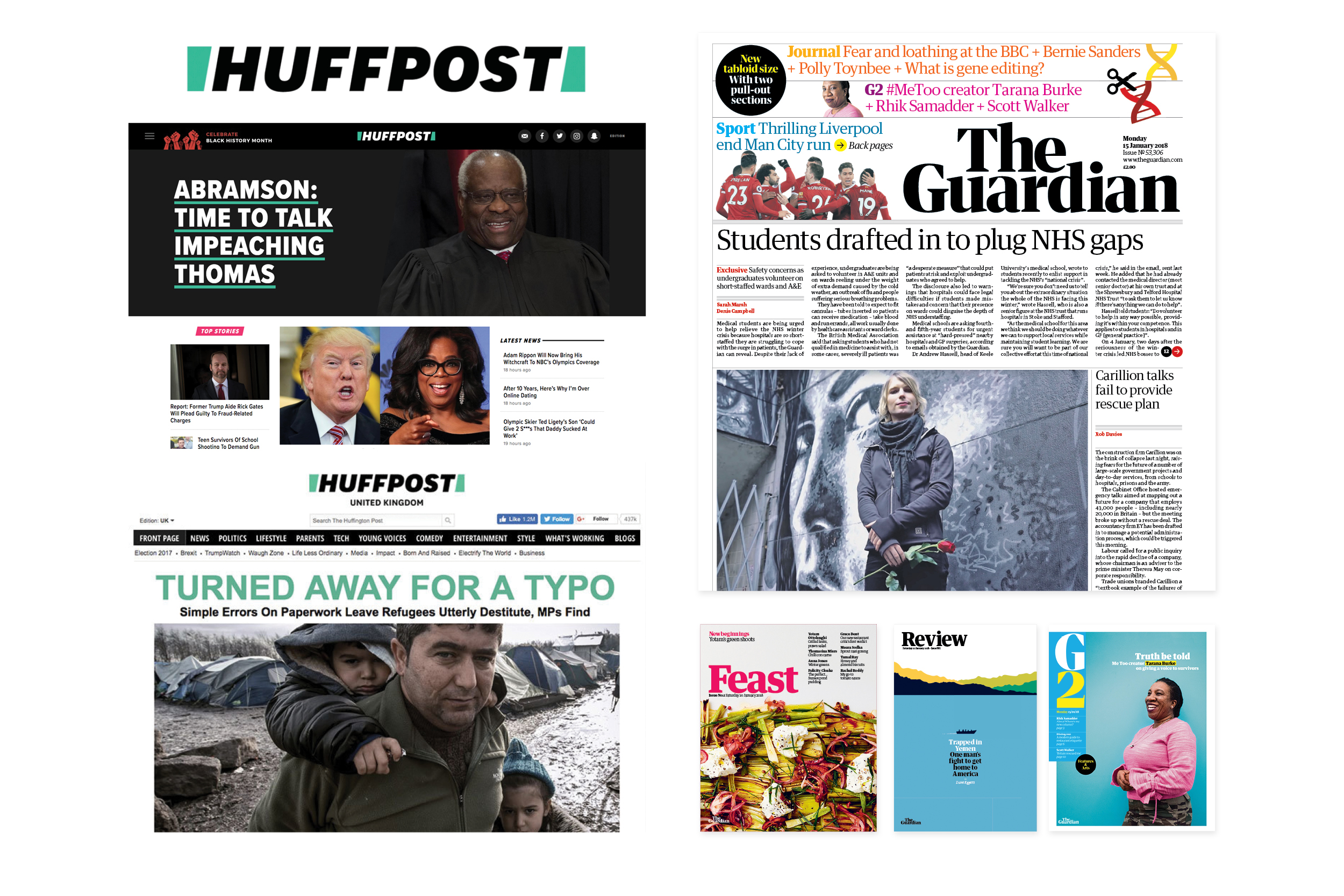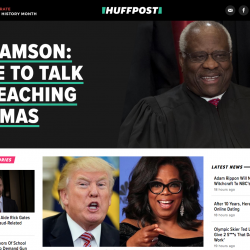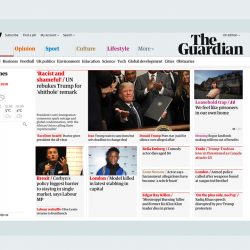A BIG FACELIFT FOR HUFFPOST AND THE GUARDIAN SHOWS ATTENTION WAS PAID TO THE DETAILS
This past 2017 fell amongst a year of great change for Western media, especially in terms of corporate identity and design. These two influential agencies of both online and print media, HuffPost from America (full name The Huffington Post) and The Guardian from Great Britain, went through their own courses of adaptation. For the visual industries such as print and media, fonts and logos are more than sacred. They embody the status of an institution, which is why any change in the design is always a big deal
For HuffPost, when Arianna Huffington, one of the founders and the managing editor, stepped down from her long reign, the new leader, Lydia Polgreen, who doesn’t seem to be so fond of Huffington’s elaborate last name, shortened the name down to two syllables. HuffPost is friendly and more accessible but still maintains the credibility of a news agency. The new name came with a content adjustment as well as the web’s structure. The original serif font (Adobe Garamond) was replaced with a bold-san-serif (National) while the new ‘HuffPost’ logo is in bold italic that ‘carries the eye forward.’ The structure of the letter ‘H’ was simplified, leaving out only a rectangular frame cut across with the slash of a white line. The green, which symbolizes the brand’s original color, was also made brighter.
New York’s Work-Order was the design firm chosen to oversee the entire new design and corporate identity, which is used with all 17 editions of the HuffPost’s web media. The feedback for the English edition has been positive, particularly from the design crowd. Getting positive feedback from a design peer is like getting good reviews on Rotten Tomatoes and it seems that Polgreen is quite happy with the result. “The new design reflects our bold promise to help readers know what’s real and what really matters.”


Across continents and over at The Guardian where there hasn’t been any substantial change at the executive level, the company’s downsizing led to the layoff of over 300 employees and the change from a Berliner format to tabloid. Simply speaking, everything was made smaller from the number of employees to the scale of the newspaper itself, consequentially causing The Guardian to save millions in production costs. The downsizing, however, made the adaptation of its image and design inevitable.
A font design company, Commercial Type, who is the mind behind The Guardian’s old headline, was assigned to be in charge of the redesign. The new Guardian Headline font, which is the combination of a wide range of weights (adapted from the original Commercial Type) was used for both the text and headlines. Still a serif in its appearance, the font’s overall look and silhouette is modern and stylishly solid. What’s also interesting is the use of different colors for the online and print editions. For the website and online platforms, the font is mostly black with a minimum use of color while the print edition sees a greater range of energetic colors, particularly in the articles’ headings in supplements and columns “the much-loved Guardian visual wit and style remain at the heart of the look,” says Katharine Viner, the current editor-in-chief.
The redesign of The Guardian, The Observer and The Guardian Weekly followed pretty much the same direction with the details of the layout being made to look more clean and simple. The new look and style resonates well with the readers’ behaviors as well as expectations for print media such as newspapers, which is to provide straightforward, substantial and credible journalism as in Viner’s words “(the new design) is simple, confident and effective.”

ปีที่ผ่านมาในแวดวงสื่อฯ ตะวันตกมีการเปลี่ยนแปลงด้านภาพลักษณ์และดีไซน์ของ 2 ค่ายยักษ์ใหญ่ทั้งออนไลน์และสิ่งพิมพ์ ได้แก่ HuffPost ของฝั่งอเมริกา (ชื่อเดิมคือ The Huffington Post) และ The Guardian ของฝั่งอังกฤษ สำหรับอุตสาหกรรมสื่อสิ่งพิมพ์และสื่อมวลชน หัวหนังสือหรือโลโก้นั้นเป็นยิ่งกว่าสิ่งศักดิ์สิทธิ์ มีความหมายดั่งสถาบัน การเปลี่ยนแปลงดีไซน์ใดๆ จึงนับเป็นเรื่องใหญ่เสมอ
ที่ HuffPost เมื่อ Arianna Huffington หนึ่งในผู้ร่วมก่อตั้งและบรรณาธิการบริหาร ต้องก้าวลงจากตำแหน่งที่ครองมายาวนาน ผู้มาใหม่อย่าง Lydia Polgreen คงไม่ชื่นชอบนามสกุลยาวๆ ของ Arianna สักเท่าไรนัก เธอจึงเปลี่ยนชื่อเรียกลดเหลือเพียงสองพยางค์เพื่อให้ฟังดูเป็นมิตร เข้าถึงง่าย และยังคงไว้ซึ่งความน่าเชื่อถือ ปรับเนื้อหาและโครงสร้างของเว็บไซต์ เปลี่ยนชุดอักษรหลักจากตัวอักษรแบบ serif (ฟอนต์ Adobe Garamond) เป็นตัวอักษรแบบ bold san-serif (ฟอนต์ National) โลโก้ HuffPost ใหม่ที่ฟอนต์เป็นตัวหนาและเอียง เพื่อสื่อสารความหมายของการก้าวไปข้างหน้า และโลโก้ตัว H ที่ลดทอนโครงสร้างเหลือแต่เพียงกรอบสี่เหลี่ยมโดยมีเส้นว่างวางเฉียงพาดทับ กับสีเขียวอันเป็นสีสัญลักษณ์ดั้งเดิมของแบรนด์ที่ผู้ออกแบบบอกว่ามันสว่างสดใสกว่าเดิม
บริษัทออกแบบ Work-Order แห่งนิวยอร์กเป็นผู้รับผิดชอบงานออกแบบทั้งหมด ภาพลักษณ์และงานดีไซน์ใหม่ทั้งหมดนี้จะถูกนำไปใช้กับเว็บของ HuffPost ทั้ง 17 เอดิชั่นทั่วโลก ซึ่งผลตอบรับจากเอดิชั่นภาษาอังกฤษก็เป็นไปในทางบวก โดยเฉพาะเสียงจากกลุ่มคนที่ทำอาชีพออกแบบด้วยกัน ถ้ารอดจากกลุ่มนี้ก็เหมือนได้คะแนนรีวิวดีในเว็บ Rotten Tomatoes และ Polgreen ก็คงจะรู้สึกพอใจกับผลลัพธ์อยู่ไม่น้อย เธอมั่นใจจนถึงกับบอกว่า “การปรับเปลี่ยนครั้งนี้เพื่อสะท้อนคำมั่นของเราที่จะช่วยให้ผู้อ่านได้ตระหนักว่าอะไรคือข้อเท็จจริงและสิ่งที่สำคัญ”
ข้ามฝั่งไปอังกฤษ ที่ The Guardian ถึงแม้จะไม่มีการเปลี่ยนแปลงคนทำางานในระดับบรรณาธิการ แต่ปีที่ผ่านมาก็มีการลดจำนวนพนักงานถึง 300 คน รวมถึงการปรับขนาดของหนังสือพิมพ์จากขนาด Berliner เป็น Tabloid อธิบายง่ายๆ ว่าปรับให้เล็กลงไปอีก การปรับลดทั้งพนักงานและขนาดของหนังสือพิมพ์นั้นช่วยประหยัดต้นทุนให้กับ The Guardian หลายล้านปอนด์ แต่เมื่อปรับขนาด รูปเล่ม การปรับเปลี่ยนภาพลักษณ์และดีไซน์จึงเป็นสิ่งที่หลีกเลี่ยงไม่ได้
บริษัทออกแบบตัวอักษร Commercial Type ผู้ที่เคยออกแบบหัวหนังสืออันเก่าของ The Guardian เป็นผู้รับผิดชอบงานออกแบบหัวหนังสือใหม่ โดยใช้ฟอนต์ Guardian Headline (ปรับมาจากฟอนต์ Guardian Egyptian ของเดิม) สำาหรับใช้งานทั้งหัวหนังสือและข้อความ headline โครงสร้างของฟอนต์ใหม่มีส่วนผสมระหว่างเส้นหนาและบาง เส้นโค้งและเส้นตรง ทำให้ถึงจะดูเป็นฟอนต์แบบ serif แต่ก็ดูทันสมัยและหนักแน่นแข็งแรง ที่น่าสนใจคือการเลือกใช้สีของฟอนต์ที่แตกต่างกันระหว่างสื่อกระดาษกับออนไลน์ โดยในเว็บไซต์หรือสื่อออนไลน์จะใช้ฟอนต์สีดำเป็นหลักและใช้สีน้อย แต่ในหนังสือพิมพ์และสื่อสิ่งพิมพ์อื่นๆ จะใช้สีที่หลากหลายโดยเฉพาะกับชื่อบทความของเล่มแทรกและบทความย่อย ซึ่ง Katharine Viner บรรณาธิการบริหาร คนปัจจุบันบอกว่า “มันคือหัวใจของภาพจำที่ผู้อ่านมีต่อ The Guardian”
การปรับเปลี่ยนดีไซน์อื่นๆ ของสื่อในเครือทั้ง The Guardian, The Observer และ The Guardian Weekly ก็เป็นไปในทิศทางเดียวกัน รายละเอียดต่างๆ โดยเฉพาะในหน้าเลย์เอาท์ของหนังสือพิมพ์ดูสะอาดตาขึ้นเรียบขึ้น รูปแบบและภาพลักษณ์ใหม่สอดคล้องกับพฤติกรรมของผู้อ่านที่มีต่อสื่ออย่างหนังสือพิมพ์ คือต้องการสาระหรือข้อเท็จจริงอย่างตรงไปตรงมา นั่นคงตรงกับสิ่งที่ Viner กล่าวอย่างเชื่อมั่นว่า “ดีไซน์ใหม่ เรียบง่าย มั่นใจ และมีประสิทธิภาพ”
TEXT: KORNMAIPOL SIRIMONGKOLRUJIKUL
PHOTO COURTESY OF HUFFPOST AND THE GUARDIAN
huffingtonpost.com
theguardian.com







